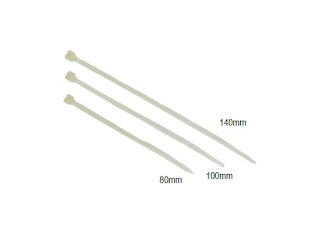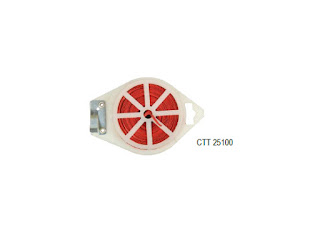This is the continuation of Panther Ph Quick Guide on Wire Connectors: Defining Terminals article.
In the real world, organization and proper arrangement of wires should be practiced for an orderly and blissful workstation. Using ties will make this possible and it could be found and bought at Panther.ph. Ties have different types these are: cable ties and twisted ties.
Cable Ties
Cable tie or tie-wrap, popularly known as hose tie, or zip tie is a type of fastener, a hardware device that mechanically joins or affixes two or more objects together, used for holding items together, most specially electric cables or wire. For its cheap price and easy to use, tie-wraps are everywhere, making it a household standard item.

(100 pcs per pack)
|
|
Model No.
|
Description
|
TSL 25080
|
80 mm
|
TSL 25090
|
90 mm
|
TSL 25100
|
100 mm
|
TSL 25120
|
120 mm
|
TSL 25140
|
140 mm
|
TSL 25160
|
160 mm
|
TSL 25200
|
200 mm
|
CSL 40200
|
200 mm
|
CSL 50300
|
300 mm
|
These cable ties could be classified according to its design. Through its design, determining where to use the object could easily be distinguished. These ties consists of flexible nylon tape with an integrated gear rack and on the other end a ratchet within a small open case. From its design feature of having the pointed tip of the cable be pulled through the case and past the ratchet and be pulled to tighten to prevent loosening of the object being bound together.
Another cable ties could be made of stainless steel for flameproof applications, this was designed as coated stainless steel to prevent galvanic attack, an electrochemical process where metal corrodes to another when both metal are in electrical contact that results to an electrical voltage.
Plasticuffs or substitute handcuffs used by law enforcement to restrain prisoners. These could also be used in wheel trims to avoid it from falling off a moving vehicle.
Its reusability is not commendable due to its design feature of being used once. In order to loosen the tie, it could either be cut off or to use a needle or similar object (sample: small screwdriver) and put it between the ratchet and the rack releasing the nylon tape. Reusing these is not advisable for it will not be as useful as it was brand new.
Custom-made Cable Ties
- Beaded cable ties: Unique beaded design allows them to be releasable and reusable
- Releasable cable ties: Easy to apply and remove, reusable
- Ladder style cable ties: Ideal for intermediate bundling and retail applications
- Identification cable ties: Built-in flags for written or printed identification
- Parallel entry cable ties: Tamper-proof, low profile heads
- Tear-off cable ties: Quick release design requires no cutting tools
Twisted Tie
Twist tie is a thin strip of paper or plastic with metal wire inside and mostly used to tie openings of bags, such as bread bags. It was used by wrapping it around the item to be fastened, then twisting the ends together (which is understandable by its name). These could be bought on pre-cut lengths, on large spools, or in perforated sheets called gangs.
These ties was made in variety of colors not just as design but as a method of determining ones’ pattern. The thin strip could be made out of plain paper, metallic paper, plastic, poly or custom coatings depending upon its application. Water-resistant twist ties such as plastic, poly, or metallic paper twist ties are better than the uncoated paper version ones. This type could be used to package lettuce and other vegetables. Broad paper covering twist tie could be handy for labeling purposes. Twist ties has variations of sizes and strengths to withstand its usage capacity.
Fun fact: A twist tie was an idea by George Hinson in 1923. It was originally invented by T and T Industries, Inc, a California based packaging company. In 1939, it was patented and marketed as Twist-Ems.
(100 pcs per pack)
|
|
Model No.
|
Description
|
CTT 25009
|
90 mm
|
CTT 25015
|
150 mm
|
CTT 25020
|
200 mm
|

(1 roll)
|
|
Model No.
|
Description
|
CTT 25030
|
30 Meters (B, R, G, O, Y, DG, W, BK)
|
CTT 25050
|
50 Meters (B, G. O, W, DG, BK)
|
CTT 25100
|
100 Meters (G, B, Y, R, DG, BK, O)
|
This article was brought to you by: Panther.ph




No comments:
Post a Comment